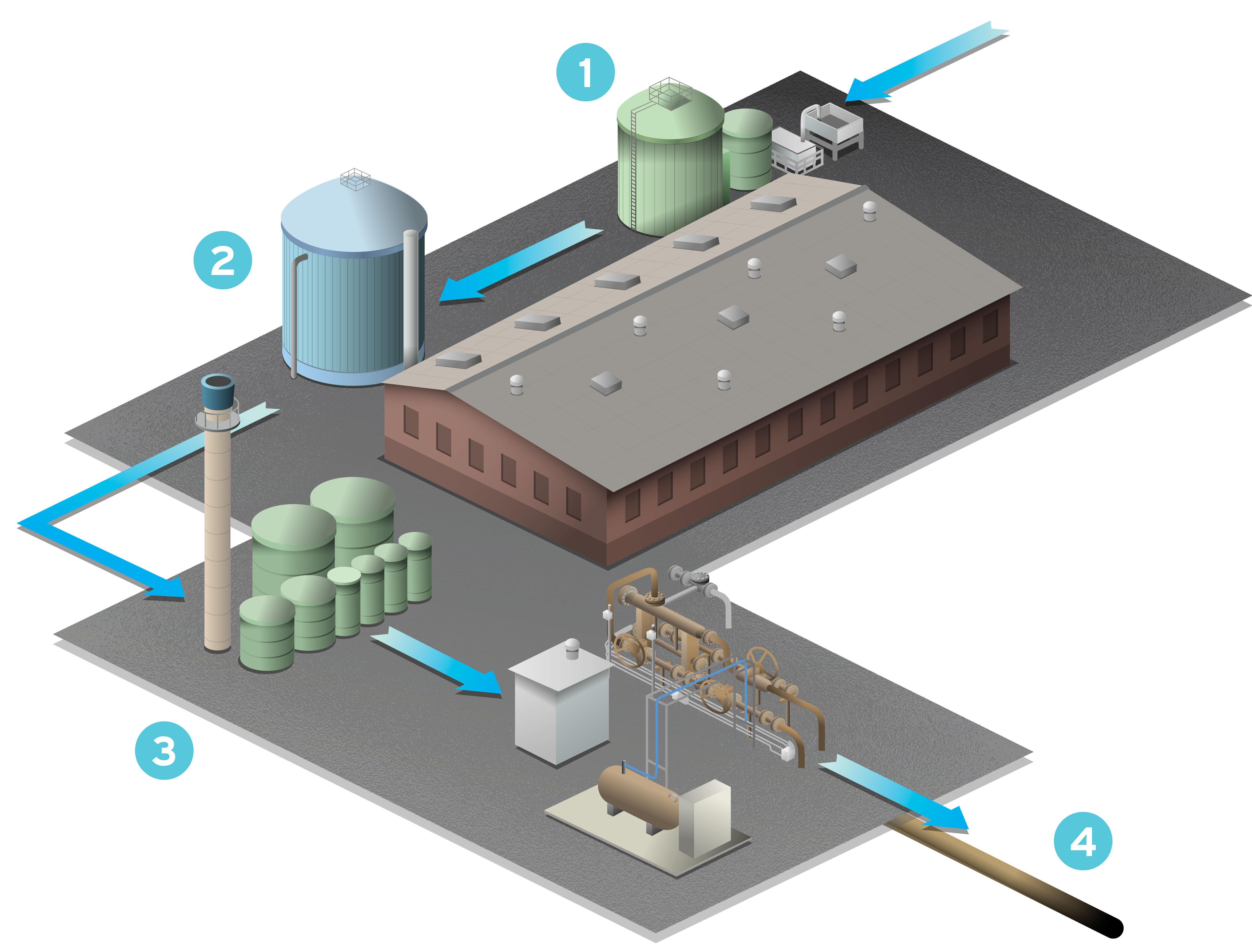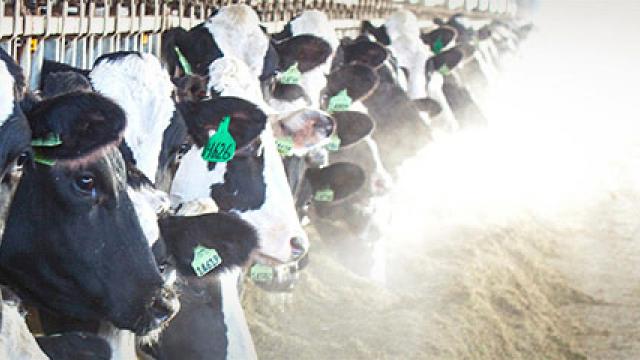Certain businesses produce or handle organic waste that can be repurposed into a clean, renewable fuel source called biogas. When biogas is conditioned or upgraded to pipeline-quality natural gas, it becomes renewable natural gas (RNG). Here are some types of businesses that tend to have sufficient supplies of the waste needed to make RNG:
- Dairies
- Landfills
- Wastewater treatment plants
- Landfill-diversion facilities
Benefits of Renewable Natural Gas
You can use RNG to power equipment or vehicles that use natural gas, or to generate your own electricity on site. This can be a great way to save money and energy. Other benefits include:
- Capture emissions of unused "waste" methane
- Reduce the need for conventional fuel
- Cut production and waste disposal costs
Unlike other sources of renewable energy—such as solar and wind—RNG doesn’t need the sun to shine or the wind to blow. Waste material can be converted into deliverable, renewable energy 24/7.
Selling Renewable Natural Gas on the Open Market
When biogas is conditioned into RNG, it potentially sells at a higher price than natural gas. For example, in 2016 the SoCalGas® average monthly natural gas commodity price was $3.00 per MMBTU. At the same time, RNG could have been sold for significantly higher price due to the credits generated by the Low Carbon Fuel Standard and Renewable Fuel Standard. SoCalGas’ network of pipelines can transport RNG almost anywhere within Central and Southern California. If you are interested in learning more about how to interconnect with SoCalGas' open access system, visit our New Receipt Points webpage or check out SoCalGas’ interconnection overview.
How it Works
Where do biogas and biomethane come from? Here’s an overview of the process for converting biogas into biomethane:
- Waste products, such as wastewater, food waste and manure are processed in a biodigester.
- The biodigester breaks down the organic material through an anaerobic process, creating biogas — a mixture of methane and other elements.
- Biogas is then conditioned and upgraded to remove the CO2 and other gas constituents. This produces renewable natural gas, or RNG, which can be used interchangeably with traditional natural gas. Learn more about pipeline gas quality requirements here.
- RNG can be used where it is produced for purposes such as generating electricity or fueling vehicles, or it can be injected into the utility pipeline and transported to an end user.

Interested in Conditioning or Upgrading Your Biogas?
SoCalGas has compiled a List of Suppliers1 that includes project developers, consultants, equipment manufacturers, installers and others that may prove helpful to you in this process. SoCalGas also offers an optional Biogas Conditioning/Upgrading Services Tariff to facilitate these projects for customers. Non-utility service providers may offer services that are the same or similar to the SoCalGas Biogas Conditioning/Upgrading Services Tariff and customers are encouraged to explore these service options as well.
1 Provided for information purposes only. There are numerous qualified non-utility providers of products and services needed for construction and operation of biogas conditioning and upgrading facilities, but SoCalGas does not recommend or endorse the products or services of any particular party listed herein, or represent that the particular products or services are fit for any particular purpose or use. By publishing this list, SoCalGas is not acting in an advisory capacity, and does not assume any responsibility for use of the list by customers. Although commercially reasonable efforts are used in posting this list, no representation is made that it is complete or free from error. Related information is posted at socalgas.com. To be added to the list, please send an e-mail to marketdevelopment@socalgas.com. Vendors are listed alphabetically and the order of listing implies no preference.
The information contained herein is made available solely for informational purposes. Although SoCalGas has used reasonable efforts to assure the accuracy of the information at the time of its inclusion, no express or implied representation is made that it is free from error or suitable for any particular use or purpose. SoCalGas assumes no responsibility for any use thereof by you, and you should discuss decisions related to this subject with your own advisors and experts.

